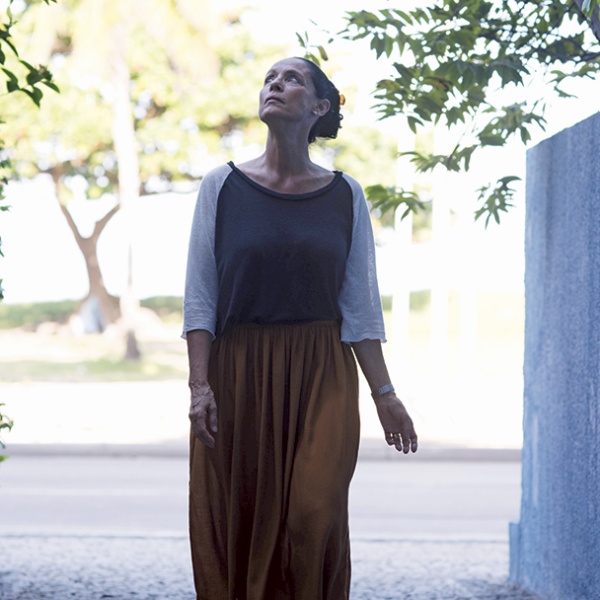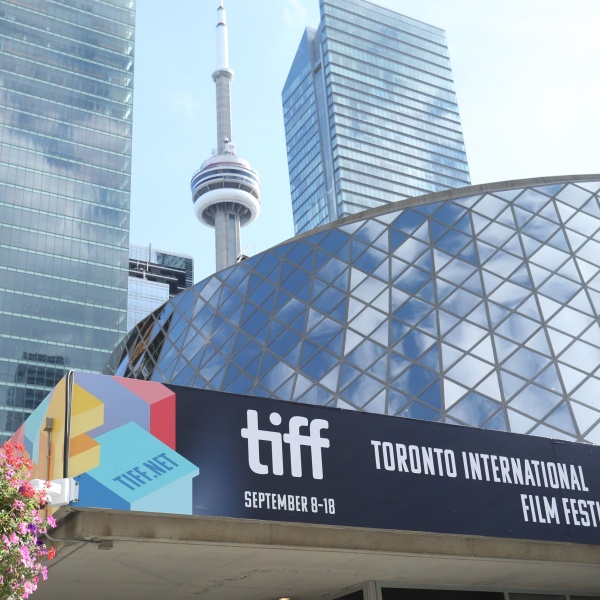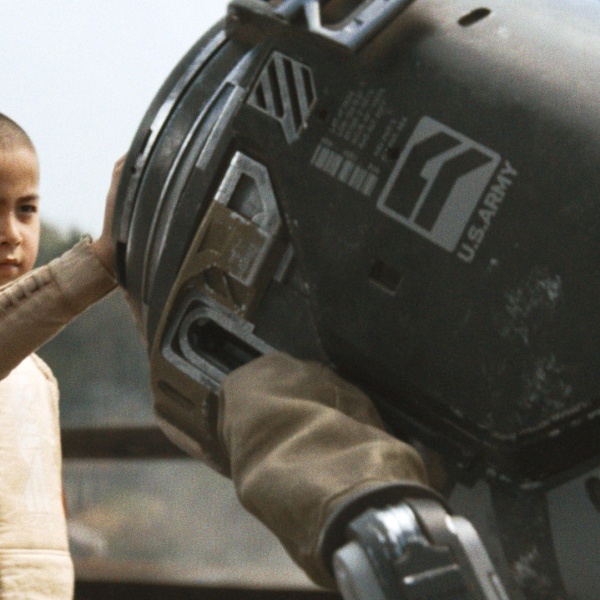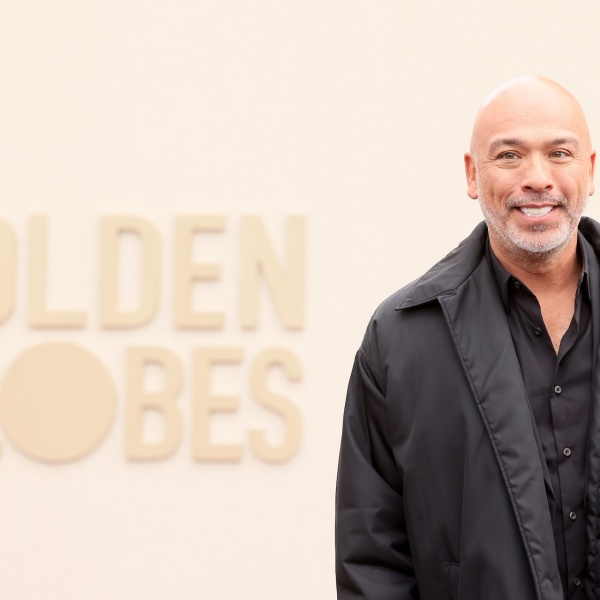
Unlike another sequel opening in theaters nationwide this weekend (which, come to think of it, does feature a humanistic animal as one of its characters), “Kung Fu Panda 2” actually delivers on the chop-socky fun of the original. With an even more epic scope and a darker sensibility, both thematically and visually, “Kung Fu Panda 2” is a really enjoyable animated treat. In our review of the film, we commended the use of 3D as it’s one of the rare instances where it adds pizazz to the picture and we liked the deeper notes found within the story .
We got to talk to the film‘s screenwriters Jonathan Aibel and Glenn Berger earlier this week about the challenges that go into making an animated movie, the influence of newly installed DreamWorks Animation creative executive Guillermo del Toro, what Charlie Kaufman contributed, and their epic-sounding “Candyland” movie for Universal.
The Playlist: You guys wrote the original film as well as the sequel – were there stories left over from the first film that you were really looking to explore?
Glenn: If you’re asking if anything from the first movie was a direct influence on the second movie, then the answer would be the dad being a goose. That was something that was a function of many things – when we came to the project there was a goose that ran the restaurant and Po was a waiter there, and one of the first things we suggested was that the goose be his father, which in the world of animated movies where animals talk, inter-species parenting didn’t seem like a big deal. It seemed like a funny but subtle element of the movie that we weren’t going to make a big deal of.
But when we went to China, in doing research for the second movie, we were very surprised by the response. Almost everyone that came up to us asked us – “How can a panda’s father be a goose?” And we realized that it struck a chord with people, it wasn’t just idle curiosity, which led us to a core idea of the sequel, which is Po, against all odds, becomes the dragon warrior. What could go wrong? What kind of conflict could a sequel offer if his dreams came true? The answer became – he may be the dragon warrior – but he doesn’t know who he is and who his parents are and he must come face-to-face with the fact that the goose may not be his father. So he’s got to find out who he is and along the way face a bigger threat than he did in the first movie; so that’s a pretty direct path from the original to this movie. 
When you went to China, what were you trying to get out of those trips?
Jon: We got different things than the rest of the crew that we went with. We also went with Jen[nifer Yuh] the director and Melissa [Cobb] the producer and the amazing production design team. I was looking at my photos from the trip recently and Glenn and I have all of these photos of us eating and in front of the Great Wall of China. And then I looked at the thousands of photos that the production designers took and it’s of bricks and walls and streets and, for the artists, to actually see buildings that are hundreds of years old and if you see the movie – the palace and the textures and all of that, they actually had to design and they took their inspiration directly from the walls and streets of China. For us, it was more about soaking up the atmosphere and imagining these spaces and what these characters would do in these places. For us it was just an inspiration for the writing and the culture.
It used to be, in animated films, that the story department would storyboard everything, what is the approach now? Is there already a story in place or do you come up with it from scratch?
Glenn: On the sequel, everyone on the art department and story department were busy enough finishing the first movie. Jon and I, because of what you can and cannot change in the process of making a movie like this, about six months before the release of the first one, we started thinking about the sequel. Which isn’t to say that everyone was so confident that it was a hit and there was definitely going to be another one, but [DreamWorks Animation CEO] Jeffrey Katzenberg thought he had something special and wanted to be prepared. And certainly the easiest and cheapest way to explore a second movie is to hire two writers to start thinking about ideas.
The first thing that we did was start wondering what audience questions there were – what could you do with this character that you haven’t already done? Is his story over? Are there ways that we can put this guy on a bigger emotional journey? So we started to come up with concepts and then we’d come back from time to time and pitch it to Melissa and Jeffrey and then we would pitch to the story team. And Jen was head of story on the first movie. So she and other board artists were responding to our ideas and giving us feedback, and it would go back and forth over the course of months. At some point, Jon and I got the go-ahead on the story and were about to go off and write the script and Jen is now the director, which is pretty cool because we all had the shared experience of the first movie and she had been involved in our pitches along the way. It was definitely collaborative and not the old school Disney way of the board artists doing the whole thing and gag writers coming in and adding some verbal humor. I guess this was a new model of having a script first.
Jon: Also, for us, being the second movie, we know all the story artists and know how they work and they know how we work. So it sort of very ego-less collaboration where there are some scenes where we would write the pages and someone would be told – “Storyboard these pages and stick to them very closely.” Other times we would say, “This is a very rough idea for a scene” and they would take that and go completely somewhere else with them. And they would come back to us and we would get transcriptions of the storyboards and we would rewrite the dialogue, and it would go back and forth, especially on the big action scenes. There’s not much point in scripting an action scene and having Po go “Look out” or “Get them!” So instead we’d say “Here’s a big action scene and the goal of Po and the Furious Five is to do this, and the obstacle is this, and the emotional beats are this and that’s what it needs to accomplish. And anyone can feel free to figure out how that happens.” Sometimes you’d get something crazy back, like the rickshaw chase, which Jen the director boarded herself. We would take that and add gags to the middle of it. So it’s a great collaboration and I think it makes the action scenes incredible and lets us throw jokes into them at the same time.
Glenn: There’s the stereotypical conflict between board artists and writers, which is board artists want everything to be conveyed visually and the writers want everything to be conveyed verbally and I don’t know if that was ever true but it’s definitely a generalization. But the biggest satisfaction we’ve had on the second movie is that we’ve had verbal jokes that board artists wrote and Jon and I have been in the position of defending to keep in and we’ve pitched visual jokes. And, again, since we’ve all worked together for so many years and there’s a level of trust and collaboration, it’s truly a joy and a benefit to the movie.
Guillermo del Toro was brought into the DreamWorks Animation fold while you were working on this movie, did he offer anything specific to the story?
Jon: First of all, he’s just amazing to work with because he brings an incredible positive energy where, if you’re working on something for three or three-and-a-half years and he comes in and says “This is good and we just need to push this forward.” He gives you that sense of confidence. And the other thing that he really helps with is making sure that we were hitting proper emotional beats. Sometimes he would say, “No, you’re rushing past that, you want to complete the thought and let the audience feel a certain emotion and let them feel that before moving on.” And in many ways it’s a philosophical thing but then it would get down to it and he would say, “You’re holding this for 8 more frames.” So he’s bringing his skills as a director, and also editorial skills, but he brings so much more to it with his experience as a storyteller.
Glenn: The other thing, given his body of work, is that he’s really funny. You wouldn’t necessarily look at some of the darker, gorier movies and think, “This guy’s got a great sense of humor.” But it’s true. We’d be in editing with him and he’d be throwing out gag ideas. That’s also a nice benefit of him.
It was reported that Charlie Kaufman was brought in to help with the script – what was his actual involvement like?
Glenn: He was in about a year ago to look at the peacock scenes and we all met with him and said, “Look at this scene, that scene, and see if you can tweak the dialogue.” And he did. But as is anything that happened a year ago, things change and I think it’s fair to say there’s not much of that left.
It goes without saying that even in your live action stuff, like the “Alvin and the Chipmunks” movies, there’s a fair amount of animation. Is your approach the same as when you’re doing animation?
Jon: I would say something like ‘Chipmunks’ is more akin to live action writing in the sense that, in live action writing, you write three or four drafts and then it goes into production and that’s usually the last you see with it. It’s off, it’s fed into the machine, and the writer isn’t particularly involved. But animation is being written up until the final few months, so it’s far more involved, especially in the ‘Panda’ films where we’re not just writing, we’re co-producing. So we’re involved in editing, recording sessions, meeting with the story artists, pitches; it’s far more all-encompassing, I would say. And I wouldn’t say there’s much difference in the process of writing an ‘Alvin’ movie and writing a live action movie that has no CG elements at all.
You guys are doing “Candyland” next, right? What is your approach to the movie?
Jon: Yes, we are writing that right now for Universal with Kevin Lima directing.
Glenn: That’s a live action movie with visual effects, closer to “Lord of the Rings” or [Tim Burton‘s] “Alice in Wonderland.” When we first met with Kevin Lima and we had this weariness that most people have when they’re approached about a Candyland movie, instantly went away when he showed us artwork and explained his vision, which was much more like what we attempt in “Kung Fu Panda” – you take something that could be considered childish or silly and you take it really seriously and say, “What if there was an operatic, ‘King Lear‘-like civil war in a kingdom that just happened to be made completely out of candy?” And you take the action sequences seriously and you take the comedic elements seriously and there’s a real emotional journey the characters go on. Having just done that, twice over, with a giant plush panda, we thought “Maybe we could try it again with candy.” We were excited about the challenge and hopefully we can pull it off.
Jon: Also, when we’re writing a character we never think – is this character animal, human, CG, is it Alvin, is it Po – you’re just thinking what would this character do and not how that character is realized. Eventually you might have to worry about that if you’re dealing with limitations of animation but when it comes down to the writing, it’s just a character and you can’t worry.
Is it nice working with Kevin, since he has a background in animation? [Kevin Lima directed the animated films “A Goofy Movie” and “Tarzan” for Disney, as well as the animation-heavy “102 Dalmatians” live action film and “Enchanted.”]
Glenn: That’s been amazing. He’s been super-helpful and he’s been very pleased that we’ve been so open. Jon and I have been a team for so long so it’s very rare that we let someone into that partnership, but because of his animation background and the fact that we speak the same language and he’s working on storyboards while we’re working on the script, so we’ll get feedback. It’s been basically a microcosm of our DreamWorks experience, but just the three of us, which has been really fun.
“Kung Fu Panda 2” is in 3D. Were you ever writing to that specific experience that 3D provides?
Glenn: We really didn’t think about it too much as we were writing, we just thought that the same people that did the totally amazing action sequences in the first movie are back doing this movie, and totally on top of it. Our job was to make sure that the character motivations and the comedy and emotions were still there.
Jon: As you’re writing, you do think, “Here’s the big cannonball battle, that’ll be awesome in 3D.” But you’re not changing the battle because it will be in 3D. The other aspect of it is that 3D can really be used to draw the audience in and I think in the beginning there was a lot of 3D in the last three years, sometimes the 3D would be pushed so much to convince the audience they were getting their money’s worth that instead of pulling you into it, every time there was some amazing thing in 3D, you’d say “Oh right this is in 3D!” What’s so great about “Panda” is that at the end of it, you’d not even realize you were watching a 3D movie, but in a good way, because I think the 3D pulls you in without ever breaking the third wall (fourth wall?) I think the 3D does this really well this time.
You talk about the continuum between the first film and the sequel; have you started to work on the third film?
Glenn: We have not. I know Jeffrey has said publicly that he’d like more time between the second and third movies, so we’ll see. If asked, we’d be delighted to keep working on it. I just don’t know what the timing of the third one would be. I also know that DreamWorks have announced their slate for the next number of years, so the next ‘Panda’ would be years off.
“Kung Fu Panda 2” is now playing in theaters nationwide.





